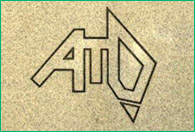
The Low-Income Super Tax Offset (LISTO) Explained
For many low-income earners in Australia, boosting their superannuation savings can be a challenge. However, the government offers a solution through the Low-Income Super Tax Offset (LISTO), providing financial support of up to $500 to eligible individuals.
Essentially, the LISTO serves as a refund on the tax paid for before-tax contributions to super, such as salary sacrifice and employer contributions. If you qualify for this offset, the Australian Taxation Office (ATO) will automatically refund the tax paid on these contributions. The refunded amount is then deposited into your superannuation account after you file your tax return. However, if you’ve reached your preservation age and are retired, you might have the option to receive the LISTO directly rather than it going into your super account.
It’s crucial to ensure that the ATO has your Tax File Number on record, as they cannot process the LISTO payment without it.
To be eligible for the LISTO, several criteria must be met:
- You must have received before-tax contributions in your super account during the financial year, including payments from your employer.
- Your total income, after adjustments, should be $37,000 or less for the same financial year, with at least 10% of it stemming from business or employment.
- You must be a permanent resident of Australia or New Zealand and not have held a temporary resident visa during the financial year.
For more detailed information on how the ATO calculates and distributes the LISTO, individuals can refer to the ATO website.
In summary, the LISTO serves as a vital support mechanism for low-income earners, aiding them in bolstering their superannuation savings for the future. By understanding and meeting the eligibility criteria, individuals can take advantage of this government initiative to secure their financial well-being in retirement.







 Setting up a SMSF is easy. If anything it can be done too easily with no real thought of consequences. It pays to get it done right, right from the outset. You need to step through a process on how to set up a Super fund correctly and there are decisions to be made as part of this process. Trustees, Members, Trust Deed, Rules just to name a few.
Setting up a SMSF is easy. If anything it can be done too easily with no real thought of consequences. It pays to get it done right, right from the outset. You need to step through a process on how to set up a Super fund correctly and there are decisions to be made as part of this process. Trustees, Members, Trust Deed, Rules just to name a few.